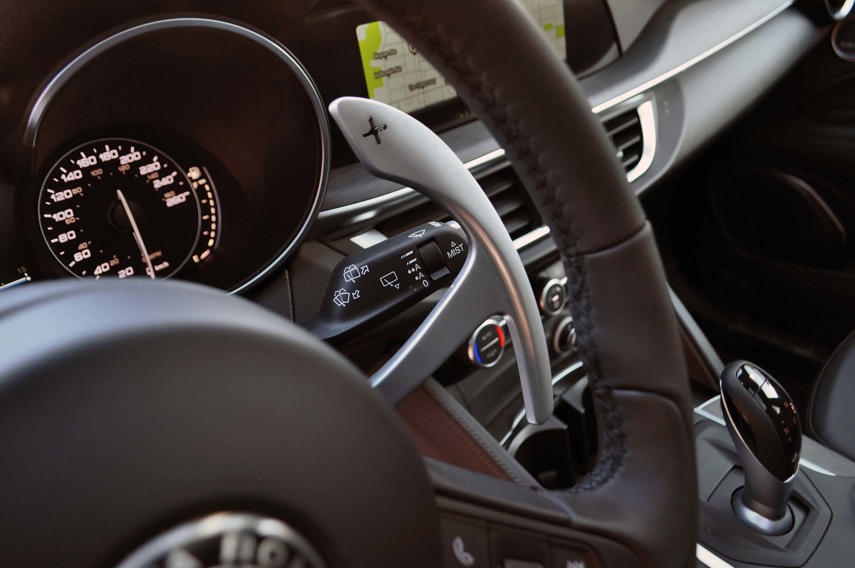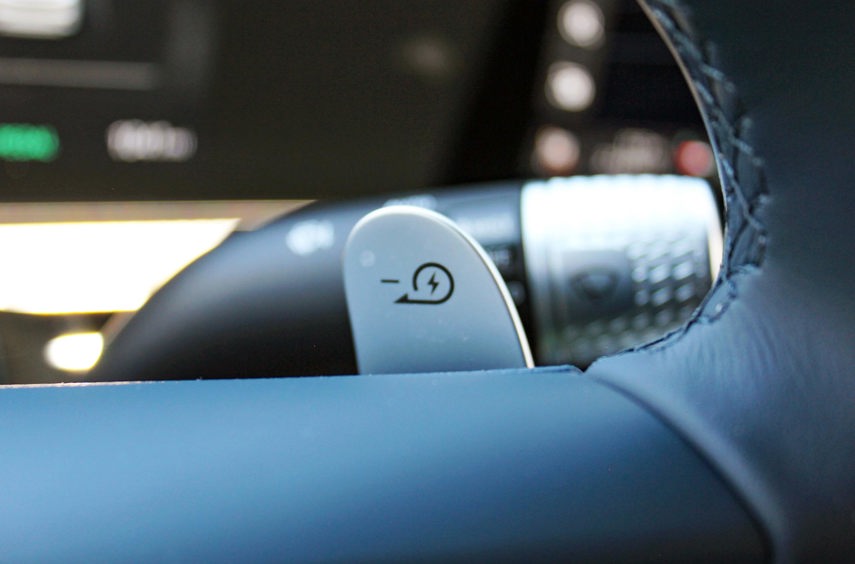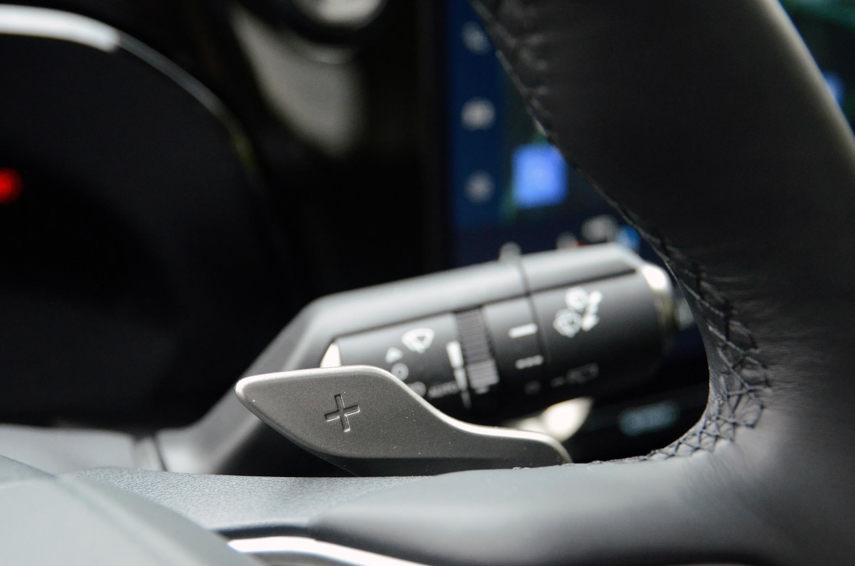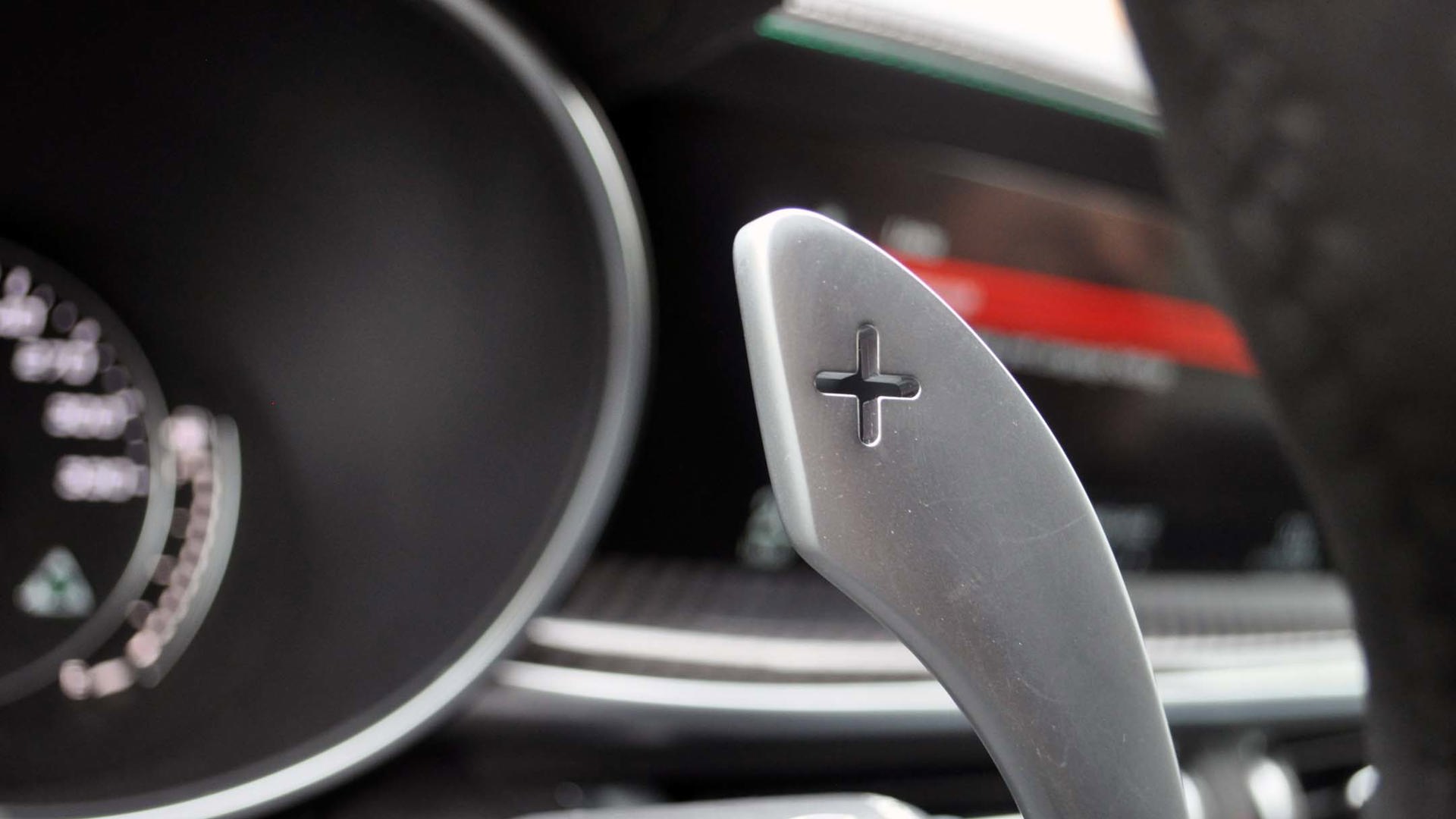Since General Motors introduced the first mass-produced automatic transmission on some of its 1940 Oldsmobile and Cadillac models, most drivers have grown quite content with transmissions that shift themselves. People are so pleased that traditional manual transmissions with clutch pedals are rapidly approaching extinction. The impending death of the manual gearbox doesn’t necessarily mean drivers can no longer shift the transmission themselves. That’s why some modern vehicles with automatic transmissions come with paddle shifters.
Read on to learn what paddle shifters are, what they do, how to use them, and their pros and cons.
What Are Paddle Shifters?

Whether a vehicle’s automatic transmission is the traditional hydraulic, a continuously variable, an automated manual, or a dual-clutch type, many provide a “manual shifting” mode. More often than not, it’s through the gearshift lever located between the front seats. But many automakers have added paddle shifters in today’s cars, typically mounted on either the back of the steering wheel or attached directly to the steering column. Constructed of plastic or metal, you’ll find paddle shifters at either the nine and three o’clock or the 10 and two o’clock positions on the wheel.
In an automatic gearbox, sensors and computers determine when to shift gears. With paddle shifters, though, drivers can change gears when they want. Initially used in sequential automatic transmissions for racing cars in the late 1980s (Ferrari was the first Formula One team to use them), paddle shifters (sometimes referred to as “flappy paddles’’) became acceptable as a substitute for the traditional manual gearbox with a clutch pedal and gated shifter.
Beyond shifting transmission gears, paddle shifters can be used to change driving modes. For example, the current Kia EV6 battery-electric car uses a single-speed automatic gearbox, as most EVs do. But, instead of shifting gears, Kia’s paddle shifters adjust the level of regenerative coasting to improve the EV6’s range and stability by optimizing front and rear-wheel regenerative braking. Drivers can choose from six regenerative braking levels (none, 1 to 3, i-PEDAL, or auto mode) depending on the desired amount of energy recuperation. Many other EVs also offer this take on paddle shifters.

How to Use Paddle Shifters
One of the biggest appeals of an automatic transmission with paddle shifters is the ease of use compared to a manual gearbox. But there are some dos and don’ts.
Depending on the car’s design, you must press or push the appropriate paddle to put the car in manual mode. Usually, the paddle marked with a “+” is used to upshift, while the opposite paddle marked with a “-” is used to downshift. An alternative can be found in McLaren supercars, where the paddle shifters can upshift and downshift by pulling the paddle upshift and pushing downshift.
While many drivers rarely, if ever, use their vehicle’s paddle shifters, there are times when they can be very useful. As a replacement for a manual gearbox, you can use the paddles to engage more in the driving experience by tapping your paddle shifter while going into a curve and downshifting a gear or two, or to increase the torque for a more aggressive curve exit. The same goes for when passing a slower vehicle. As you make that pass, kicking down a gear increases torque and acceleration. Another benefit is when you need more control, like driving in snow or towing downhill. Paddle shifters can also be used to use engine braking to slow down your car without activating the brake lights.
And unlike a manual gearbox, there are safeguards when using paddle shifters to keep you and the transmission safe. Abrupt downshifting can damage a manual gearbox, but many paddle shifter systems have downshift lockouts to prevent you from dropping into inappropriate gear. If you try to downshift but hear warning tones instead, the system won’t drop to a lower gear because that could push the engine’s revolutions past its limit.
Do Paddle Shifters Have Any Pros and Cons?

Just as a traditional manual gearbox has advantages and disadvantages, so do automatics equipped with paddle shifters.
The missed gear shifts, the heavy use of the clutch in stop-and-go traffic, and the challenge to heel-and-toe properly that manual gearbox drivers need to deal with evaporate with paddle shifters. Cars with paddle shifters can deliver quicker gear shifts. The average driver takes between 0.5 and one second to shift a manual transmission’s gear, while a paddle shifter can do the same in 0.25 seconds. And on a race track, automatic-equipped high-performance cars with paddle shifters typically produce lower lap times.
As for cons, there are a couple. First, despite all the advancements in automatic transmissions, paddle shifters sometimes have difficulty reading the road under severe weather conditions. The other negative is the extra cost. For example, a 2024 Volkswagen Jetta Trendline with an optional eight-speed automatic transmission starts at around $27,500. But buyers looking for paddle shifters need to pay about $35,000 for the sportier Jetta GLI’s seven-speed automatic with paddle shifters.

